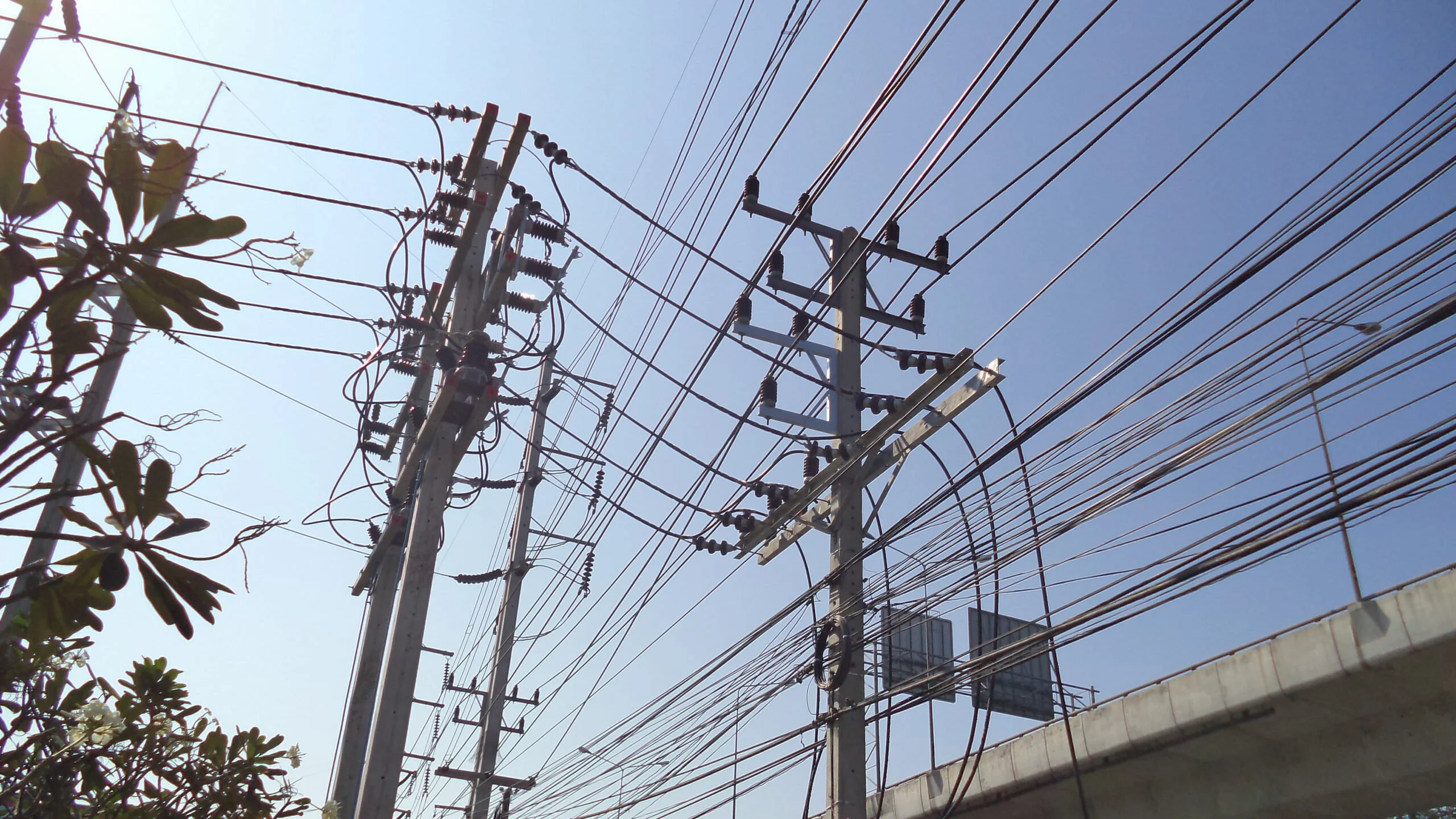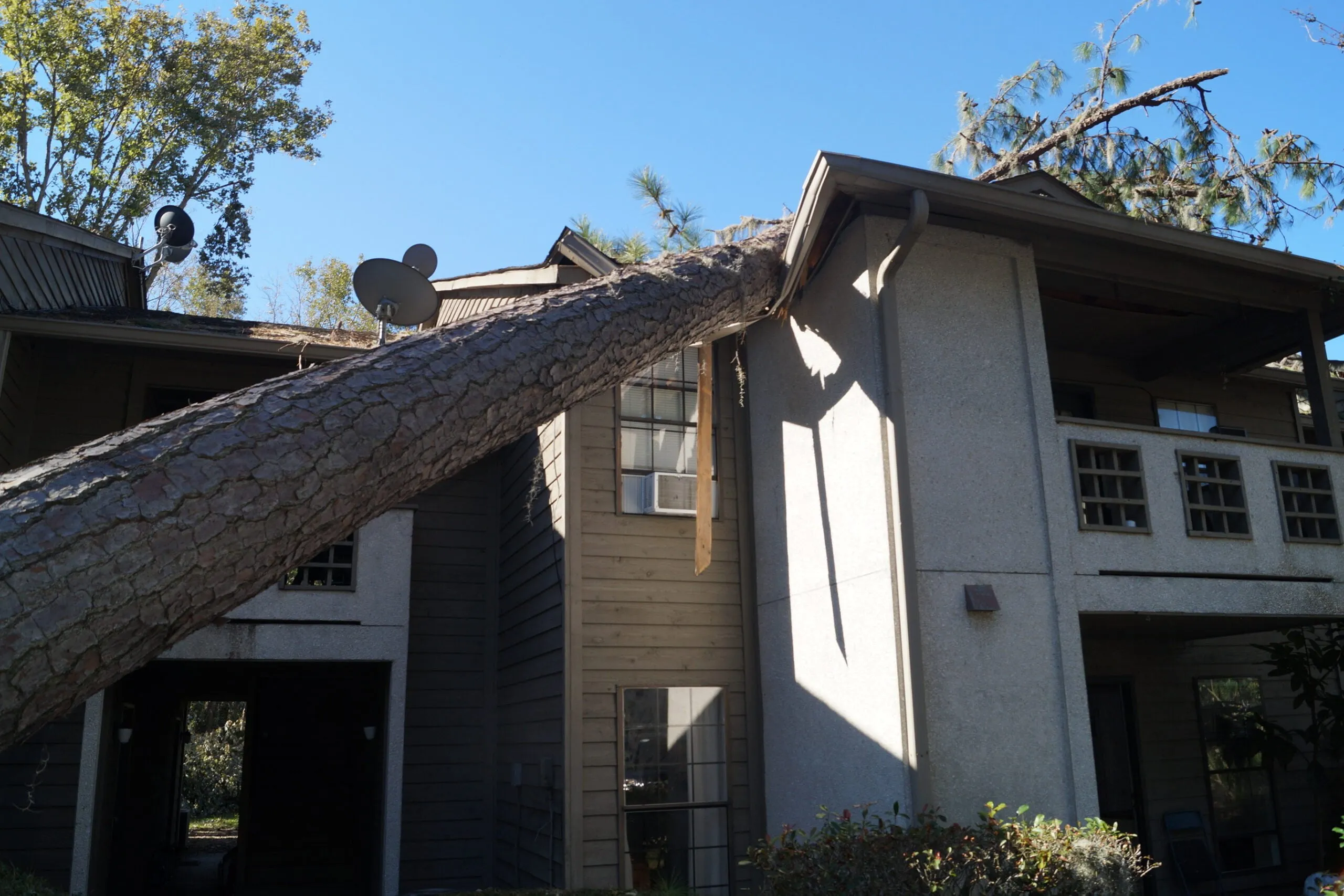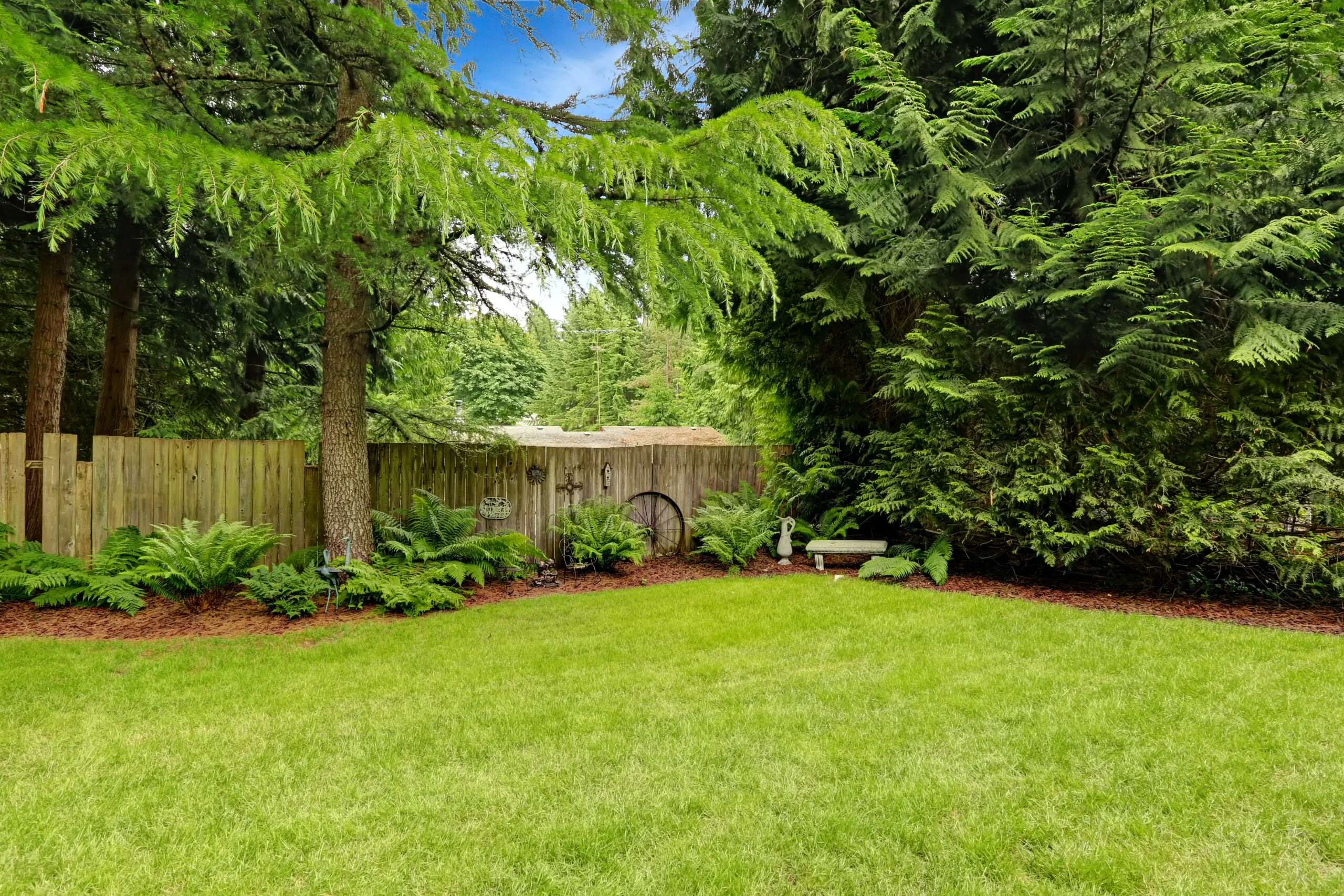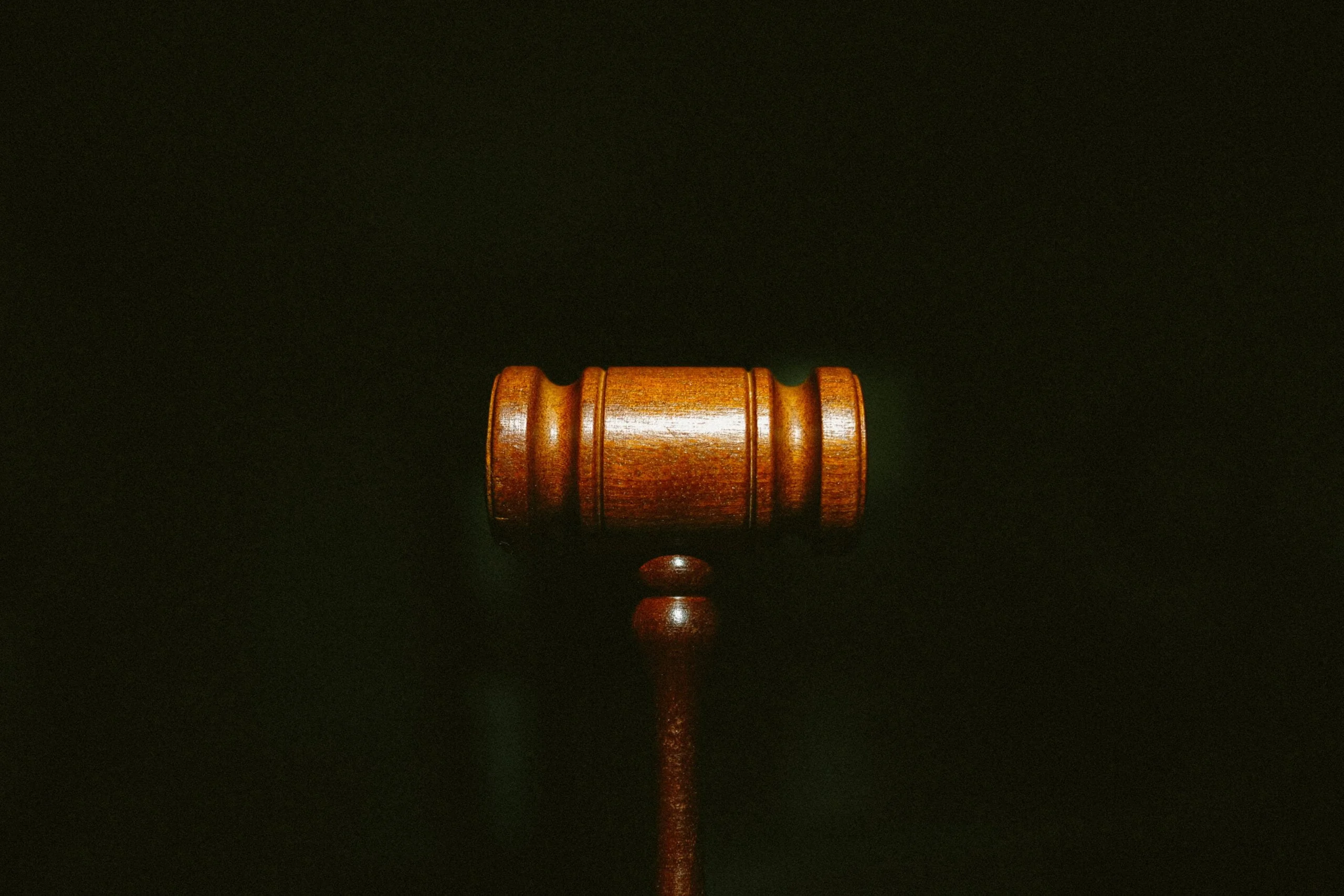The scenario is all too common: Storms bring rain, lightning, snow, ice and wind… and sometimes, the combination is just too much for trees.
Often, a severe storm (or even just a rotten branch) leaves you asking “what should I do if a tree fell on house?” An even more complicated question has to be, “what if a neighbor’s tree fell on my house?”
Here’s what to do if a branch or tree lands on your property.
What Can You Do When a Tree Falls on Your House?
After the tree falls, take these three steps immediately.
1. Ensure Everyone Is Safe
Evacuate everyone (and your pets) from the house as soon as it’s safe to do so. If you have already packed an emergency kit — with supplies such as food, water, first aid, batteries, flashlights, copies of important documents and more — bring it along just in case.

2. Call 911 and the Electric Utility Company if the Tree Interfered With Power Lines
Once you’re safely out of danger, check to see if the tree knocked down any power lines. If you smell smoke or see sparks or flames, call 911 immediately. If you have nearby neighbors, let them know what’s going on, too.
Carefully check to see if the tree is touching the power lines. If so, turn off the breaker. If the power is out, call the power company and let them know.

3. Prevent More Damage
When a tree falls on your house, it may break windows, damage your roof and siding, and even crash through bricks and mortar.
Where possible, tarp or board up any holes to keep the elements out. Don’t risk going on the roof, though, as that’s a job best left for professionals.
A fallen tree may also damage gas lines. If you suspect the fallen tree is hitting a gas line, turn the gas off at the meter and call the gas utility company.
Is a Tree Falling Covered by Homeowner’s Insurance?
Now that you and your family have moved to a safe spot and you’ve secured your home against further damage, it’s time to document the event. Many homeowners wonder if their insurance will cover a tree that falls on their home.
It’s an important question, as the damage caused when the tree fell on house tends to be both extensive and expensive. After the storm has passed, start the process by gathering documentation for your claim.
Take pictures and videos of all the damage. Be sure to includes shots from different angles, both inside and outside the home.
Don’t go up on the roof to take pictures, though; leave that to a specialist.
Look for and document issues such as:
- Broken windows
- Damaged siding
- Roof damage
- Damage to your home’s contents
- Structural damage
- Damage to your landscaping
Next, call your insurance agent to start the claim process. The agency may send a claim adjuster to your home, or they may want you to provide them with estimates of work costs from several contractors.
In most cases, you’ll be responsible for paying a deductible. Take a look at your policy to determine how much you’ll have to pay. Deductibles often run into thousands of dollars, depending on the policy you purchased.
Depending on your policy, you may be able to recover repair costs (minus the deductible, of course) if the damage is determined to be caused by an “act of nature.”

Usually, this includes events such as wind, lightning, or hail that may cause a tree to fall on your house.
However, if the fallen tree is determined to be caused by neglect — such as a rotten tree that wasn’t maintained — or a reckless action — such as trying to cut the tree down in an unsafe manner — your insurer may refuse to pay.
Neighbor’s Tree Fell on My Property: What Now?
If a neighbor’s tree falls on your house, who’s responsible? The answer lies in the ownership of the tree, says NOLO.
As a general rule, if the trunk of the tree is on their property, they own it. If the trunk of the tree is on your property, it’s your tree.
What if the trunk grows on both sides of the property line? You and your neighbor are co-owners of the tree. Though branches and the tree’s canopy may reach across property lines, that doesn’t change ownership.

However, in most cases of tree fall, the person whose home was damaged will make a claim on their own homeowner’s policy. Usually, insurance will pay repair costs if the fallen tree was due to an act of nature.
Your neighbor will only be considered liable if their neglect, lack of maintenance, or reckless actions caused the tree to fall.
How Much Does Insurance Pay Toward Tree Removal?
According to the Insurance Information Institute, most homeowner’s policies will pay for tree removal if it damages an insured structure. Costs usually run between $500 and $1,000.
The specific amount insurance pays toward tree removal and repair depends on your homeowner’s policy. Be sure to read the fine print, and talk to your agent to get full details on what’s covered and what’s not.
A few key terms to understand include:
- Limit: The highest amount your insurance will pay for a covered claim
- Dwelling coverage: Pays for damage to your home
- Other structures coverage: Pays for damage to structures such as sheds, detached garages, or fences
Can I Sue My Neighbor If Their Dead Tree Falls On My House?
Laws may vary from state to state but in most places, if a tree falls and causes property damage, the tree owner isn’t liable… if the tree falls due to an act of nature. However, if it’s determined that the tree fell due to the owner’s negligence, then the tree owner nay be held liable.
For instance, perhaps the tree’s trunk is on your neighbor’s property. For several years, a large, dead branch has stretched across property lines and hangs over your roof. You’ve asked your neighbor to trim it back several times, but they just never got around to it.
One day, the branch falls, causing damage to your roof and siding. In this case, the neighbor’s negligence likely caused the branch to fall. Therefore, the damage is their fault. You may be able to prevail in court in such a case.

Which Trees are More Likely to Fall?
Though some tree falls may take you by surprise, some types of trees are more likely to take a tumble. These include trees with shallow root systems, such as balsam fir, Bradford pears, cedar, hemlocks, magnolias, maples, tulip poplars, white spruce, and willow oaks.
But under certain conditions, any tree can become unbalanced and pose a risk. How can you tell if a tree is going to fall? Look for warning signs such as:
- Injured trees
- Rotting wood
- Loss of branches on one side
- Damaged roots
- Trees that lean to one side after a windstorm
- Trees that grow in saturated soil or boggy sites
- Trees with roots that run under the pavement
- Tall trees with heavy canopies
- Trees that grow in shallow or rocky soil
If you have trees on your property that display these warning signs, have an arborist take a look. They may be able to recommend steps to take to prevent tree falls.
Though your homeowner’s policy may cover damage from a fallen tree, it’s still a stressful and expensive problem to fix… and in most cases, you’re stuck paying a deductible.
If your insurance doesn’t cover the costs of repairing the damage — if, say, the tree fell due to negligence or lack of maintenance — the expense of repairs may run into the tens of thousands of dollars. That’s money out of your pocket.
For many homeowners, coming up with that kind of cash (or running up credit card debt) simply isn’t feasible. Fortunately, you have options: Sell your house to HomeGo.
HomeGo buys houses as-is. That means you don’t have to worry about paying for expensive repairs. HomeGo will provide you with a firm, same-day offer. In many cases, the sale will close within just two weeks.
Why deal with the hassle of repairing damage from a fallen tree? HomeGo makes it easy to sell your home and escape the stress. Contact HomeGo today to discuss your options.




